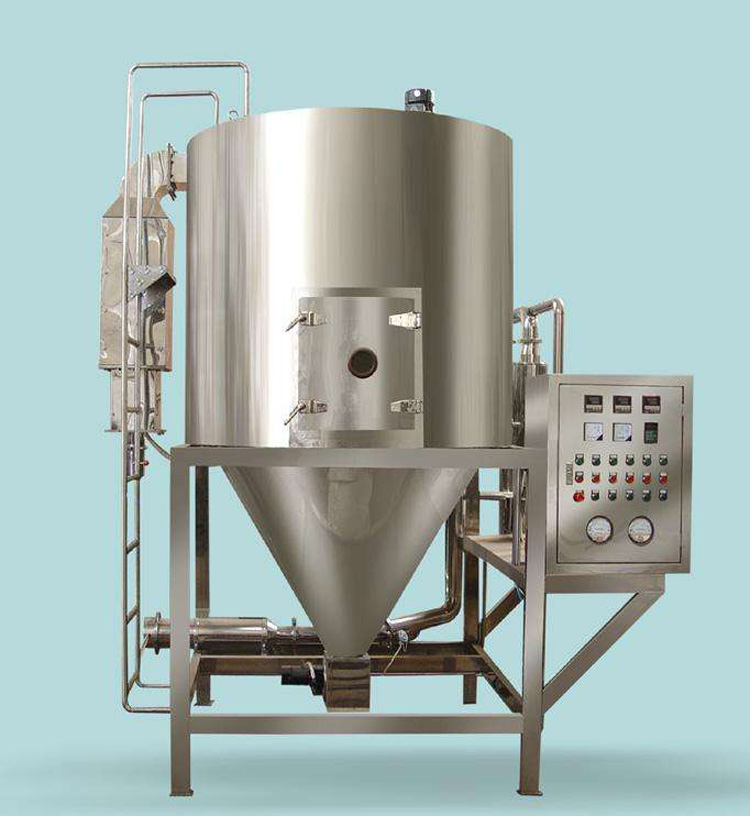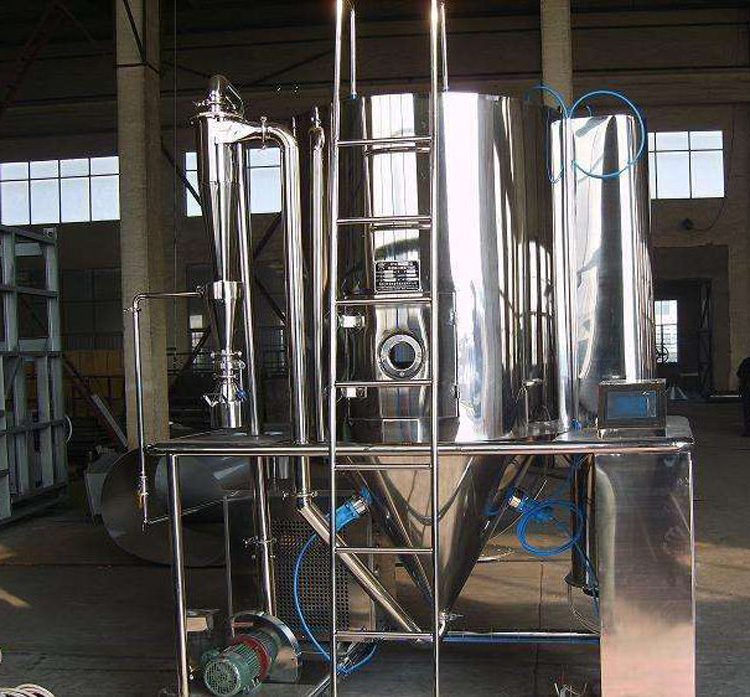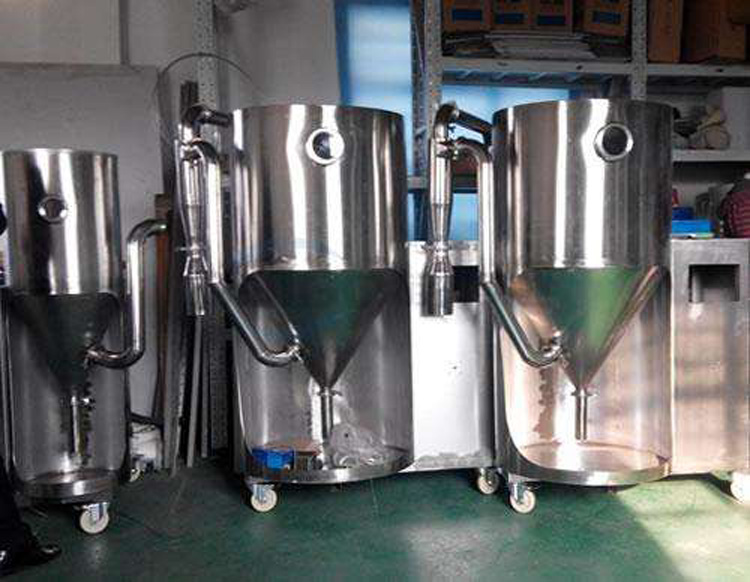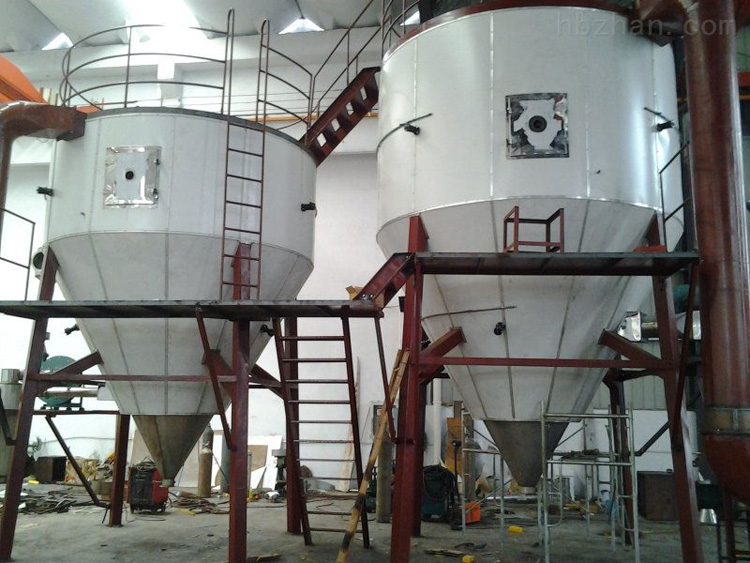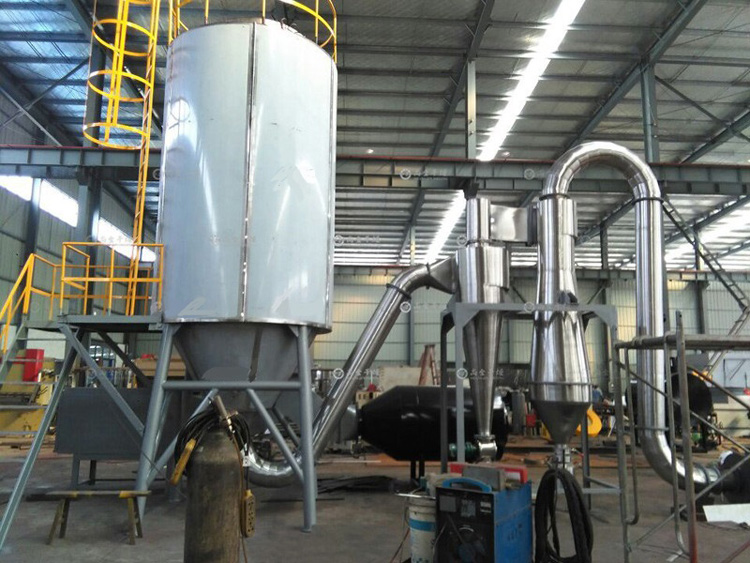Equipment Overview
The centrifugal spray dryer is named for its centrifugal atomizer. It is one of the most widely used drying equipment in industrial production. The machine operates by adding liquid to a high-speed rotating dispersion disk, where the liquid is flung into droplets by centrifugal force and then dried within the dryer. On the surface of the dispersion disk, the liquid spreads out into a thin film and is thrown out at high speed at the peripheral edge. The atomization effect depends on the linear speed of the atomizer's edge and the feeding rate, as well as certain physical properties of the material.
Working Principle
Filtered and heated air enters the air distributor at the top of the dryer, where it spirals uniformly into the drying chamber. The liquid is dispersed into extremely fine mist droplets by the high-speed rotation of the atomizer at the top of the tower, then it comes into contact with the hot air and dries into a finished product in a very short time. The finished product is continuously output from the bottom of the drying tower and cyclone separator, while the exhaust gas is evacuated by an exhaust fan.
Performance Features
-
Fast drying speed: After atomization, the surface area of the liquid is greatly increased, and 95%-98% of the moisture can be evaporated instantly in the hot air stream, with the drying process taking only a few seconds, making it especially suitable for drying heat-sensitive materials.
-
The product has good uniformity, flowability, and solubility, with high purity and quality.
-
The production process is simplified, and operation control is convenient. Liquids with moisture content of 40-60% (up to 90% for special materials) can be dried into powder or granular products in one step, eliminating the need for crushing and screening after drying, reducing production processes, and improving product purity. The particle size, bulk density, and moisture content of the product can be adjusted within a certain range by changing operating conditions, making control and management very convenient.
Adaptability to Materials
Chemical Industry: Sodium fluoride (potassium), alkaline dye pigments, dye intermediates, compound fertilizers, formaldehyde silicate, catalysts, sulfuric acid agents, amino acids, silica, etc.
Plastic Resins: AB, ABS emulsion, urea-formaldehyde resin, phenolic resin, melamine (urea) formaldehyde resin, polyethylene, polyvinyl chloride, etc.
Food Industry: Whole milk powder, gelatin, cocoa powder, substitute milk powder, blood powder, egg white (yolk), etc.
Food and Plants: Oats, chicken broth, coffee, instant tea, seasoned spices, meat proteins, soybeans, peanut proteins, hydrolysates, etc.
Sugar Industry: Corn syrup, corn starch, glucose, pectin, maltose, potassium sorbate, etc.
Ceramics: Aluminum oxide, ceramic tile materials, magnesium oxide, talc powder, etc.
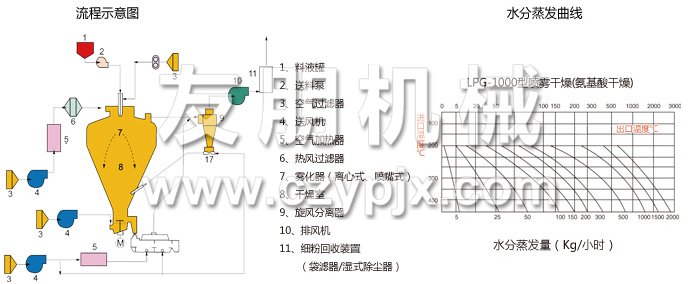
Technical specifications
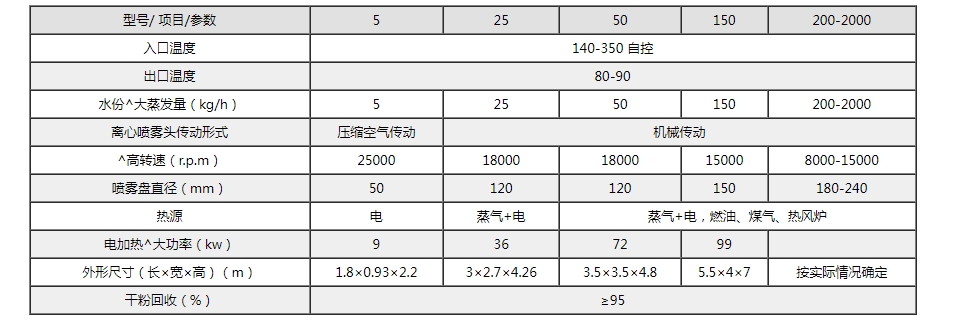
Note: The amount of moisture evaporation is related to the characteristics of the material and the inlet and outlet air temperatures. When the outlet temperature is 90°C, the moisture evaporation curve is shown in the above figure (for selection reference). As products are continuously updated and parameters change, we regret that we cannot notify in advance.
Ordering Instructions
-
Name and properties of the feed liquid: solid content (or water content), viscosity, surface tension, pH value.
-
The capacity of the dried powder, allowable residual water content, particle size, and allowable maximum temperature.
-
Production capacity, daily operating hours.
-
Available energy sources: steam pressure and availability, electrical capacity, available coal, oil, and gas quantities.
-
Control requirements: whether the inlet and outlet temperatures need automatic control.
-
Powder collection requirements: whether to install a bag filter, and environmental requirements for exhaust gas emissions.
-
Any other special requirements.
-
External dimensions

Hot Tags:
High-Speed Centrifugal Spray Dryer Centrifugal Spray Dryer LPG Centrifugal Spray Dryer





